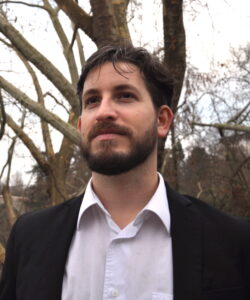UFO Size Limits
The preceding remarks bring us to the size of UFOs. Sometimes, they seem to abandon discretion and show themselves in the heart of big cities, villages, gardens, etc., but they are then, so to speak, models adapted to the place, both in size and behavior. When they venture into a room, they are room models. We’ve never heard of a UFO getting stuck in a window embrasure. And when they land on a terrace or venture into a hospital courtyard, they are always the right size. Moreover, the dimensions of the limits are very instructive. Whether it’s the size of a ping-pong ball or the size of a flying aircraft carrier, the reported phenomenon, all things considered, wisely conforms to the dimensions implied by, among other things, the structuring of space by the human body and technique. Curiously, this is never discussed. Indeed, the way we structure our space is something we take for granted. In fact, since we know nothing a priori about the phenomenon, there’s no reason why there shouldn’t be testimonials reporting the appearance of UFOs some ten kilometers long. In this respect, the phenomenon lags far behind UFOs. Whether we refer to A. C. Clarke’s hypothesis that any sufficiently advanced technology is indistinguishable from magic, or the hypothesis of unbridled phantasmagoria, we can only be amazed by the relative wisdom of the phenomenon. Finally, when very large UFOs are observed, they have the modesty to be where they belong: in the sky. To my knowledge, no saucer the size of an ocean liner has ever been seen on the ground.
Observation Time Limits
Of course, the length of time a UFO can be observed varies enormously, from a few moments to several hours. Without wishing to prejudge the motivations of the possible occupants, it must be recognized that a sighting on the ground or nearby could hardly be prolonged any further without causing an indescribable mess. Which is precisely what never happens. Note that if there are exceptions, they do indeed confirm the rule: in fact, when sightings exceed this duration, they always take place in conditions that make it possible: high in the sky, in isolated places, etc. There’s a whole saga, in science fiction, of planet-vessels, civilization-vessels, etc. (cf. among others Childhood’s End, Space Odyssey by A. C. Clarke). By this I mean that science-fiction fantasy, often based on the necessarily inadequate extrapolation of knowledge, is a fantasy of phantasmagoria linked to the uncontrolled human psyche: the proof is in the fact that all possible forms are taken by the various stories.
On the contrary, the fantasy of UFOs, i.e. “reality” fantasy and a mimetic fantasy. The proof is in the fact that all UFO manifestations are strictly controlled, respecting certain norms. But if UFOs were, as some claim, a “creation” of the human mind, we’d have to expect it to manifest itself under control, as it does in science.
The Limits of Behavior
This problem is too complex to cover in this article. Let’s just say that at the level of material behavior, there seems to be a host of possibilities within the limits of elusiveness.
Humanoid Appearance and Behavior
Humanoids have been seen in the most unexpected positions. The most common seems to be inactivity. One often gets the impression that they are performing, especially as they have often been seen neither getting out of their machines, nor returning. But then, sometimes they “act”: they are busy with plants, minerals, appear to be playing, handling objects whose function is not obvious. The emphasis is precisely on the absurdity of their behavior: we’ve seen them ask for water, talk about rain and shine, make speeches that Jehovah’s Witnesses wouldn’t disavow, even repair machines whose first characteristic is precisely that they can’t break down. They can fly, run without touching the ground, and so on. But we’ve never seen them (and why not?): engaging in the kind of sexual frolics we’ve come to expect from mixed crews: cooking, eating, arguing, even indulging their natural needs. It’s as if, of human appearance and behavior, we only retain signs that are sufficiently schematic to enable our minds to reconstruct, from memory, a silhouette and behavior that are close to human behavior. The purely biological aspect would be erased.
In fact, their invulnerability goes hand in hand with these speculations. Elusiveness applies not only to the machines themselves, but also to their occupants: it’s as if a single force controlled the entire manifestation. For even if we assume, from a human point of view, the total reliability of the technology responsible for the phenomenon, what happens to the occupants when they move away from their machines? Sometimes, they find themselves cut off. Fights and chases are not uncommon, and when they come under fire, although in some cases they may seem to survive the impact, the end result is always the same: they slip through our fingers. But we have to admit that, no matter how wide the gap between us and insects, we can be their victims as well as their predators, because we can’t control the multiplicity of possible events. Let the cosmonaut step on a cobra as he leaves his capsule, and NASA can do nothing for him if there’s no serum nearby. It’s this miracle that seems to realize the mysterious source of the phenomenon: the absolute control, old dreams of cyberneticians, of what we call chance.
Some Related Phenomena
Engine Failure
It is not necessary to give examples of engine failure. However, it should be pointed out that for a long time, they were thought to be due to the action of an intense magnetic field on the engine’s ignition system. A recent case of a diesel engine stalling has invalidated this hypothesis. However, UFO escorts of aircraft are very common, and in these cases the engines don’t stall. That’s what I call the law of least damage.
Luminous Phenomena
René Fouéré was the first to study the luminous phenomena of UFOs, phenomena that give an impression of omnipotence and magic. Consider, however, that the length of these beams, however spectacular they may sometimes have been, never greatly exceeds the visual environment of a witness. This is contrary to science fiction, which insists on the cataclysmic aspect of the phenomenon.
At any given moment, the phenomenon seems to behave according to several “laws.” One of these (elusiveness) is common to all manifestations without exception. Secondly, each sighting can be seen as a combination of some of these other laws, namely: discretion, ostentation, least damage.
These laws may seem contradictory: discretion-ostentation, violation of physical laws and appropriateness to our spatio-temporal framework; absolute safety and least damage, and so on. In fact, this is only an apparent contradiction, since a perfect match with the particular conditions in which the manifestation takes place means that elusiveness can be reserved in all circumstances. Of this phenomenon, of which everything else is radically unknown, we can at least say:
- That it is “programmed” to be inaccessible to us;
- That it conforms, or is conforming, to our spatio-temporal framework, to the reference scale of our body and our technique. This is the fundamental paradox of the problem, and behind the movement of appearances, the constants.
We could write that the maximum duration of an observation is always slightly less than the time required for collective human activity, in the precise setting and circumstances where the observations take place, to organize a coherent response. You’ll never hear a report on the radio one morning along the lines of “A huge cigar-shaped craft has landed in the Villeneuve-St-Georges marshaling yard, bringing rail traffic to a halt. Beams of light from the craft are flooding nearby buildings, while small humanoid beings can be seen nearby. The army has surrounded the station, etc.” All this has been observed separately time and again, it’s simply this precise conjunction (and many others) that is impossible. The phenomenon models itself on the conditions surrounding its appearance with the perfect precision of a chemical reaction.









